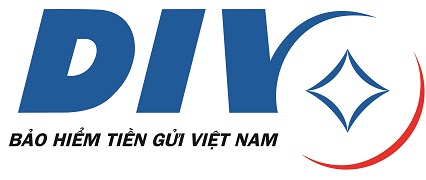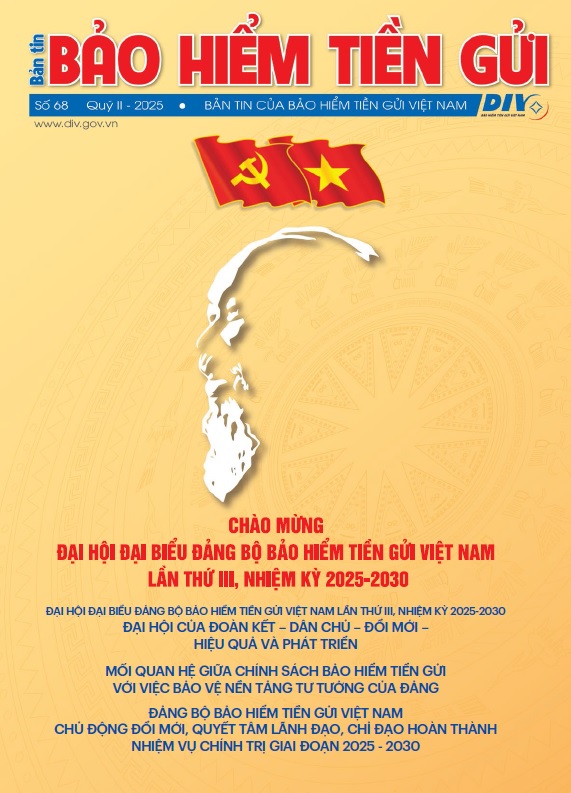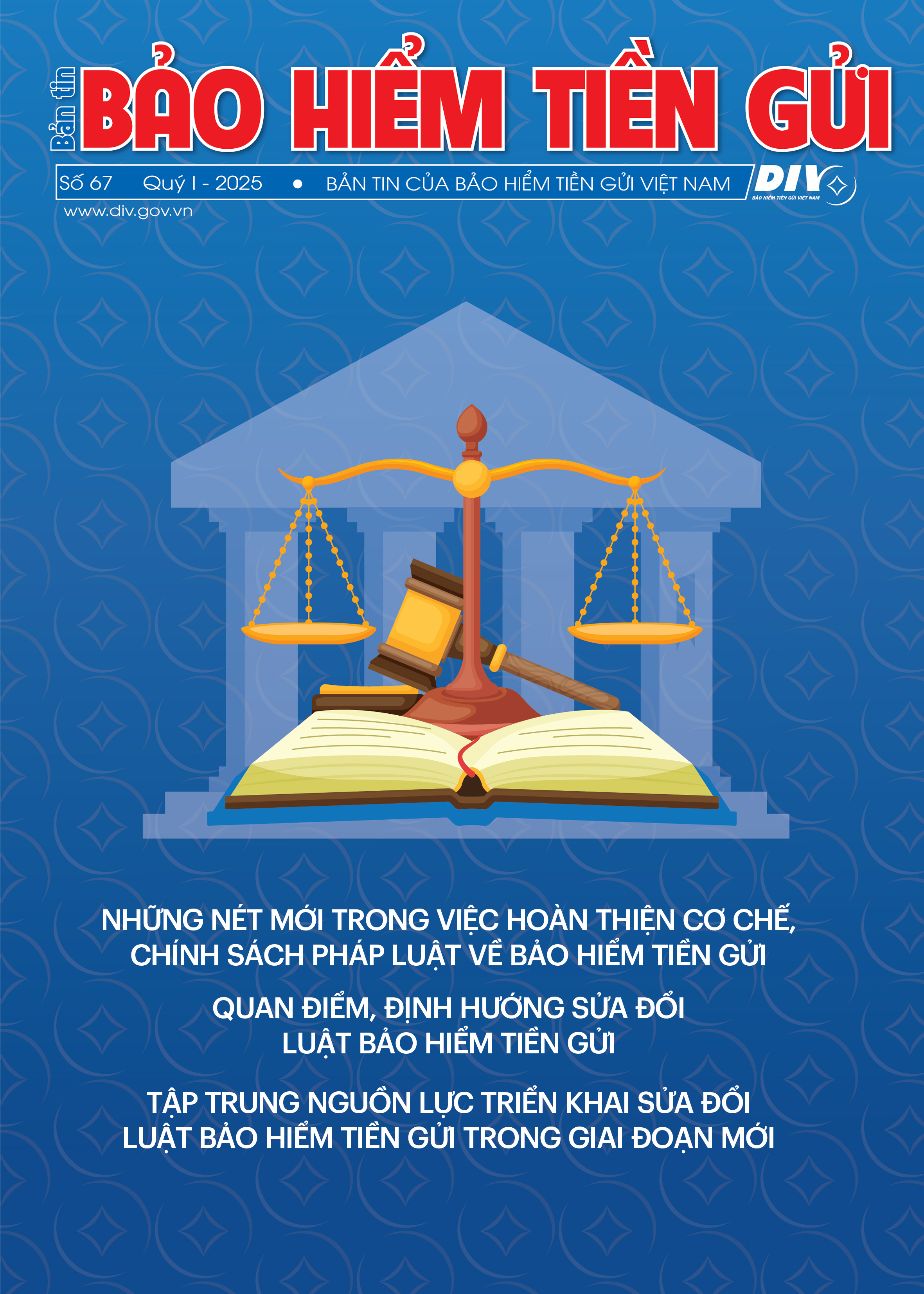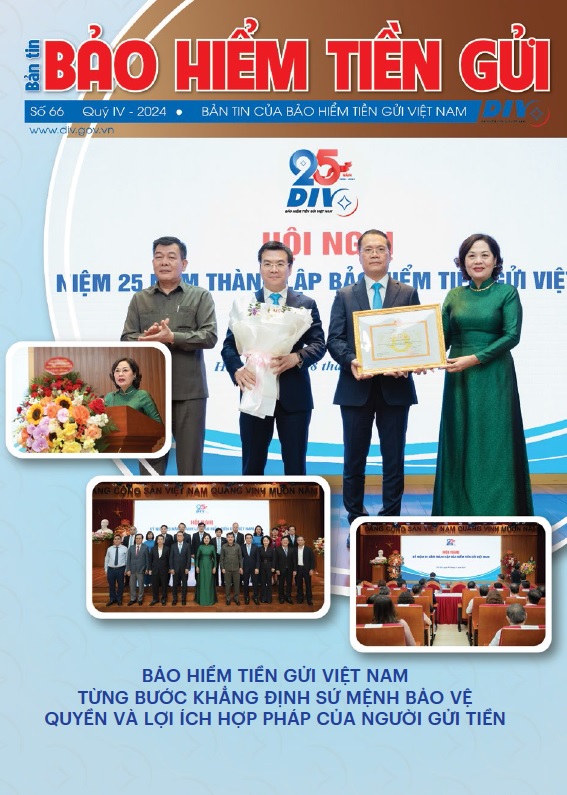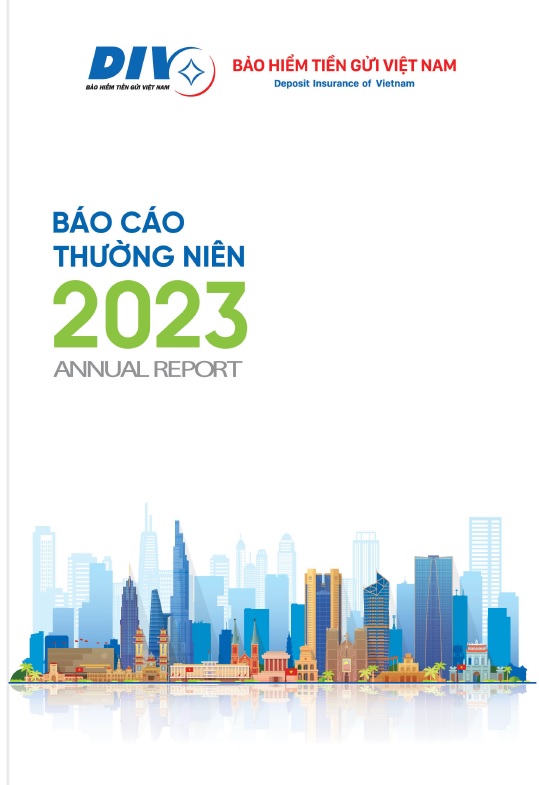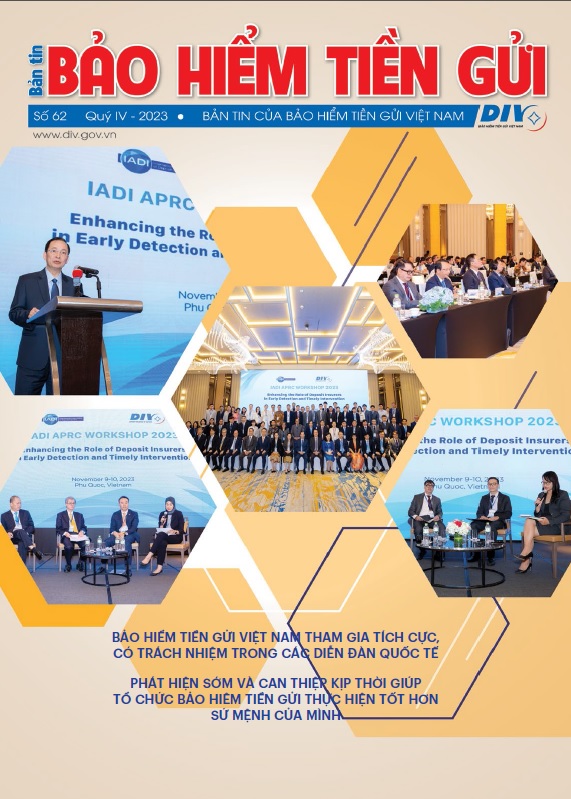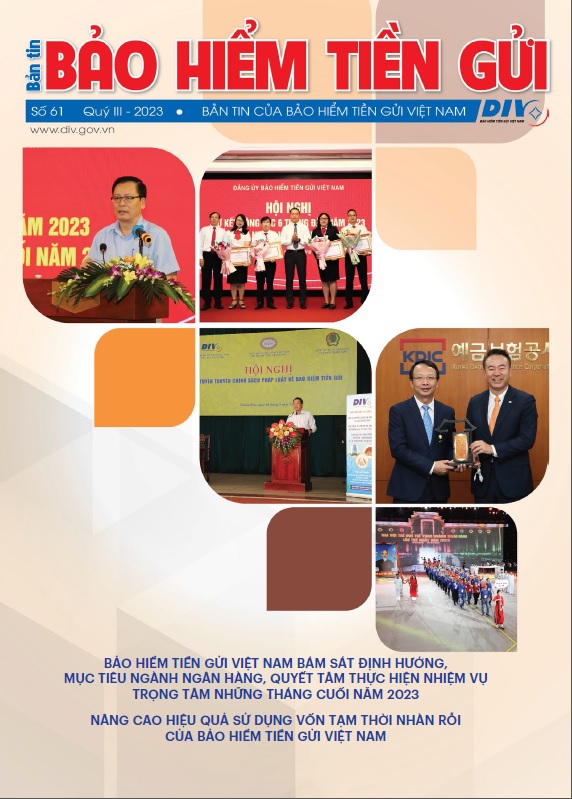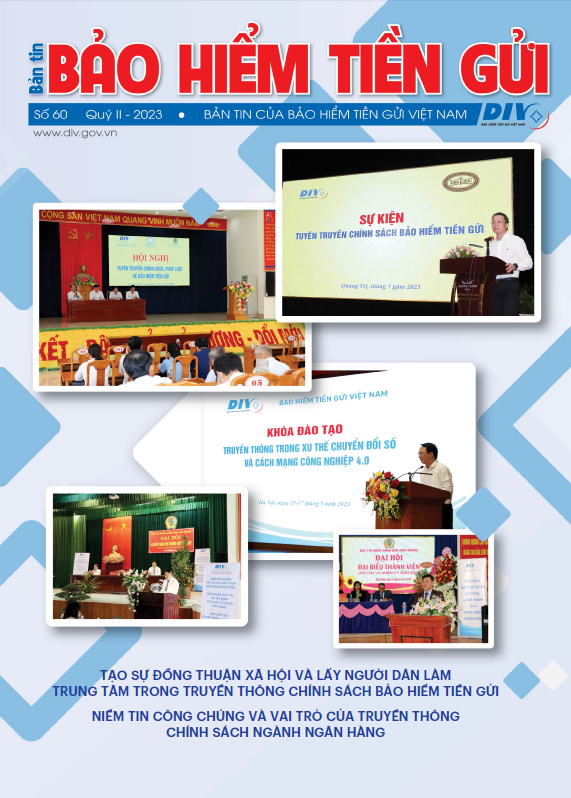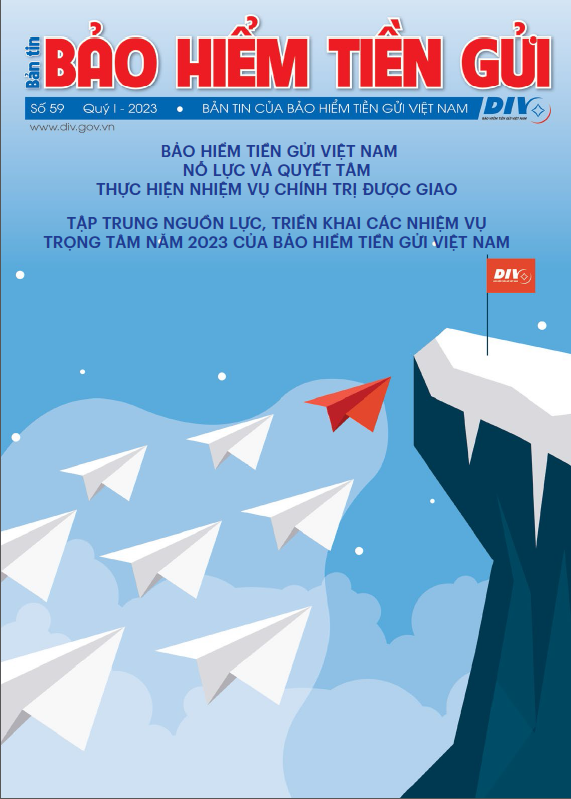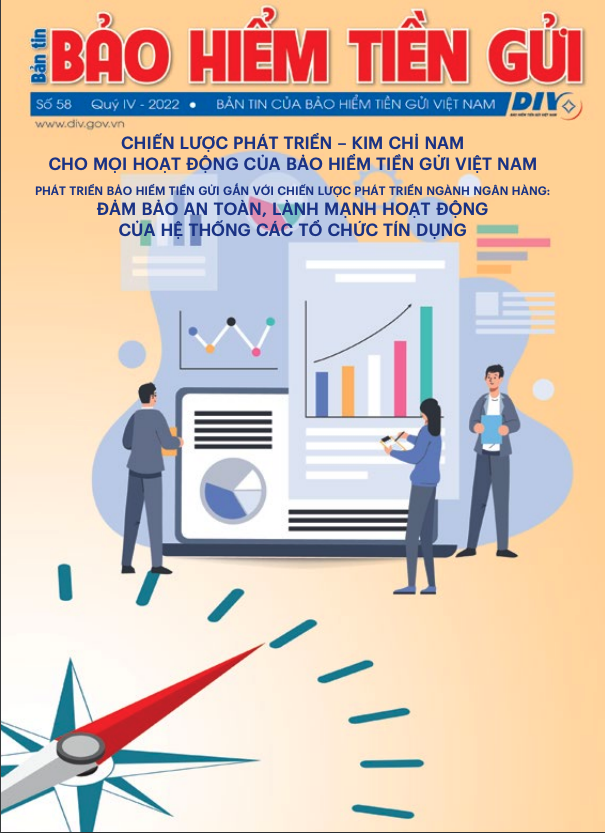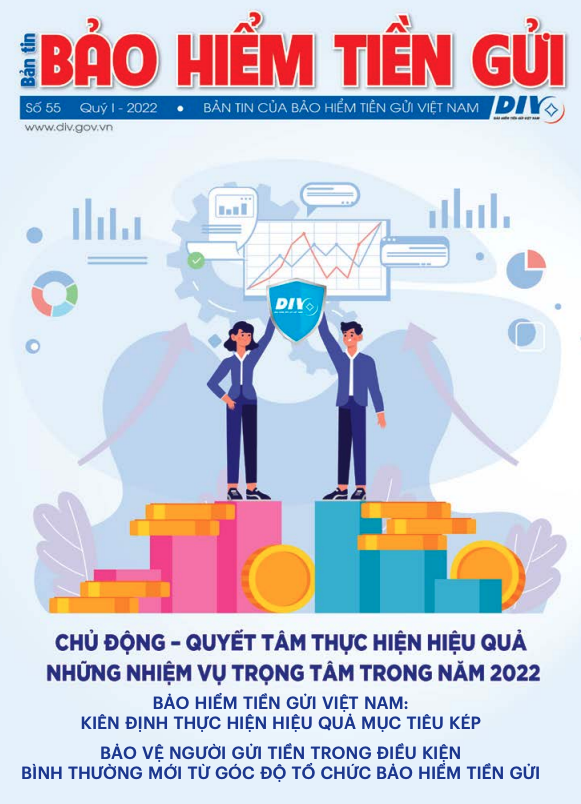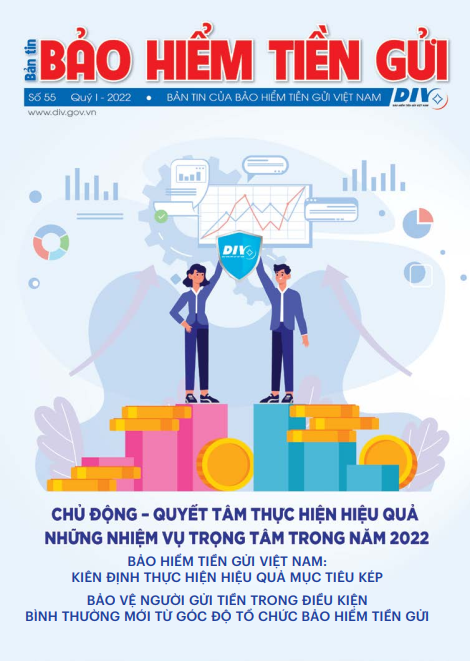Suggestion on raising the coverage limit
From economic experts and government officials
Mr. Tran Du Lich – Head of Ho Chi Minh City’s Delegation of National Assembly deputies
Insurance coverage limit has a direct impact on public confidence. In other countries, when their financial markets undergo a lot of changes, the coverage limit is lifted up to a very high level in order to consolidate people’s confidence. In reality, higher the coverage limit is, less likely payout is to be made. The coverage limit can be stipulated depending on different periods: high level during crises and low one during stable periods of banking industry. Certainly, when setting a specific level, it is necessary to take into account factors influencing the coverage limit and create a favorable mechanism to change it when needed and avoid moral hazards.
Mr. Le Xuan Nghia Former Vice Chairman of Financial Supervisory Commission:
Deposit Insurance is a factor significantly affecting depositors. Around the globe, deposit insurance is widely adopted and considered as a criterion to choose a bank for depositing money in. In those countries with developed commercial bank systems, numerous cases of bank bankruptcy have taken place, causing great losses to depositors and they only got back a part of their deposits. Therefore, depositors are highly concerned with the deposit insurance coverage limit as well as the performance of banks. Presently, Vietnam’s economy has integrated intensively and extensively into the world economy, the mechanism of budget subsidies has been dismantled, cases of bank bankruptcy are likely to happen. Hence, it is necessary to enhance the role of deposit insurance, including raising the coverage limit to reinforce depositors’ confidence in the banking industry.
Mr. Nguyen Sy Dung- Vice Chairman of the Office of National Assembly:
The coverage limit of VND 50 million set by the current regulations is too low. As far as I know, this has been applied since 2005. Given the pace of inflation, economic growth and increasing per capita GDP, the current one has become too small. Certainly, such a low coverage limit can not motivate people to deposit money in credit institutions.
In my opinion, the coverage limit needs to be adjusted soon. During the financial crisis, many countries increased the coverage limit or applied blanket guarantee for deposits.
Mr. Tran Dinh Thien – General Director of Institute of Vietnamese Economy:
Depositors want to be assured that they do not lose all money when the credit institution goes bankrupt. It is especially the case when the economy suffers an external negative shock like the 2008 global financial crisis.
In the context that the world economy is recovering unstably with many hidden risks and Vietnam’s economy has just picked up from the bottom of the crisis, it is requested to enhance depositors’ confidence. One of necessary and immediate measures is to raise the coverage limit in order to boost public confidence in the banking system while the economy is facing difficulties.
Mr. Nguyen Van Oanh – Vice Director of the State Bank’s Bac Giang Branch:
The Law on Deposit Insurance lays a firm legal foundation contributing to the enhancement of the effectiveness of the deposit insurance, banking activities and the consolidation of public confidence in the banking system.
In order for the Law to come to life, related authorities should issue documents detailing the implementation of the Law swiftly. I also suggest the authorities adjust the coverage limit up as the current level is much lower than GDP per capita and unsuited to the economic conditions.
Mr. Vu Viet Thu Vice Director of the State Bank’s Hung Yen Branch:
To enhance the effectiveness of Deposit Insurance policy and public confidence, at present, given the increase in incomes and living standard of people, higher demand for depositing money in banks, I suggest the coverage limit be raised to VND 200 -300 million in order to contribute to the stabilization of credit activities in local areas and restrain, gradually eliminate black credit.
Insured institutions
Mr. Tran Phuong – Vice General Director of Bank for Investment and Development of Vietnam (BIDV):
The VND 50-million coverage limit adopted since 2005 is no longer suitable for the socio-economic conditions of Vietnam. In my view, relevant authorities should consider raising the coverage limit to a proper level in order to strengthen public confidence, contribute to promoting capital mobilization of credit institutions for economic development of our country.
Mr. Pham Thanh Ha – Vice General Director of Vietcombank (VCB):
Over years, we have seen many socio-economic changes in the country and the global economic crisis. Clearly, other countries have taken prompt actions including flexible adjustment of the coverage limit. However, at present, Vietnam still keeps an unsuitable level of the coverage limit. Taking VCB as an example, to fully protect 80% of its depositors, the coverage limit must be lifted up to VND 270 million. To fully cover 90% of VCB’s personal depositors, the coverage limit must be raised to VND 500 million.
Ms. Ha Thi Hoa Binh – Vice Director of Bank for Investment and Development’s Hung Yen Branch:
Presently, our branch has so many personal clients depositing more than VND50 million in an account (about 70%). In relation to the economic conditions, inflation and people’s average income, the current coverage limit is not suitable any more. Hopefully, DIV suggests concerned authorities increase the coverage limit, contributing to bringing DI policy to life and better protecting depositors’ interests.
Mr. Luong Van Hanh – Vice Director of People’s Credit Fund in Moc Chau state-run farm’s town, Son La:
Though no depositors hope the credit institution fails for receiving insurance payment, the coverage limit actually strengthens their confidence and shows the State’s attention to them. The coverage limit is indeed a lifebuoy in emergent cases. However, the current level of VND 50 million is too low, just nearly twice the per capita GDP. I suggest the concern authority increase the coverage limit in order to better ensure the interests of depositors.
Mr. Dang Van Du – Director of Duc Ninh People’s Credit Fund (Quang Binh)
In order to fully realize the positive effects of DI policy, the Government should promptly increase the DI coverage limit. Over the past years, the economy has grown and living standard, incomes of people have continuously improved. The VND 50-million coverage limit is out of date, partly limiting the fund mobilization of People’s Credit Funds (PCF). Even in a poor province like Quang Binh, the number of deposits worth VND 500 million – 1 billion is not small at all.
Local authorities
Mr. Vu Tat Son – Vice Chairman of People’s Committee cum Vice Chairman of liquidation committee for Tru Huu People’s Committee, Luc Ngan, Bac Giang:
In reality, DIV has always made pay-out in a timely and effective manner, meeting the expectations of depositors, dispersing their worries and stopping the systemic contagion. However, this is the last-resort solution and both the credit institution and depositors do not expect that to happen. Depositors’ confidence is the key and thus, if the coverage limit is adjusted up to VND200 million or even more, the depositors will feel better protected.
Mr. Nguyen Van Dong – Party Committee Secretary, Chairman of People’s Council, Nhu Quynh Town, Hung Yen:
The DIV plays an important role in reinforcing depositors’ confidence, contributing to maintaining the stability of local PCFs and social security. As compared with the local living standard, the coverage limit of VND50 million is too low. It is suggested that the relevant authorities lift it up soon so as to mobilize idle funds of people for economic development.
Depositors
Ms. Lau Thi Quyen, Chieng Di mountain village, Van Ho commune, Moc Chau, Son La:
I hope that the State will soon increase the DI coverage limit so that people feel safe depositing their money in banks. Ethic minority people like us can not understand economic laws. However, better protected our money is, happier we just feel.
Ms. Tran Thi Ngoc, Binh Noi hamlet, Tru Huu commune, Luc Ngan district, Bac Giang Province:
We are and will be depositing our money for earning interests. Thanks to the Party, the Government and the DIV, we have no fear of loosing money at all. When Tru Huu PCF was dissolved, I got all my money back. However, I think, the coverage limit should be increased because for now, the number of deposits exceeding VND 50 million is large. No one expects the credit institution to fail, but higher level of protection, more assured he feels.
Mr. Nguyen Van Phan, Vinh Phong, Kien Giang:
Thanks to the presence of the DIV, I really feel secured when deposit money in the local PCF. I myself and others have already got back money including principal and interest when Vinh Phong PCF failed. In my local area, not a few places are ready to borrow money from people at very high interest rates. However, it is not ensured that these are not “black” credit funds where once money gets in, never goes out. Therefore, to earn interest and at the same time, to ensure 100% safety, I think, people should only place money in insured credit funds. At present, the DI coverage limit of VND50 million is too low. I hope the DIV will make proposal on increasing the coverage limit by, probably, 5-6 times so as to promote people’s faith.
Mr. Ly Hong, 14 Truong Han Sieu Street, Vung Tau:
The DIV has brought absolute confidence to retirees like us particularly and depositors generally. On meetings of the residential groups, I have always encouraged the neighboring residents to deposit money in those credit institutions insured by the DIV, so that, they can earn interest and simultaneously, do not worry about losing money saved for very long time. I hope the Party, the State and the Government will pay more attention to DI policy by, first and foremost, raising the coverage limit.
Mr. Do Nhat Anh (donhatanh2001@yahoo.com):
On behalf of 4 million overseas Vietnamese, I would like to suggest the DI coverage be adjusted up. The current level of VND50 million is too low that overseas Vietnamese do not want to place money in Vietnamese banks as they are familiar with high levels of DI coverage in other countries. If approved, this adjustment will encourage many repatriated people to deposit money in Vietnamese banks.
Swift application of risk-based premium assessment
Deputy Phan Van Quy (Nghe An’s Delegation of Deputies):
DI premiums that are assigned to the Government to decide should be calculated on clear principles, criteria. Currently, the premium rate of 0.15%/year no longer promotes credit institutions to enhance their quality and effectiveness. In the upcoming time, when calculating premiums, credit institutions can be rated as A, B and C class, corresponding with the premium rates of 0.15%, 0.2% and 0.3%/year respectively assessed on the total balance of insured deposits.
Deputy Tran Du Lich (Ho Chi Minh City’s Delegation of Deputies):
At present, it is unsuitable to charge both bad banks and good banks the same DI premium rate. The Law on DI stipulates that the Government shall decide premium rates on the principle of applying different rates to different risk levels. As we rate credit institutions by risks, premiums should be calculated on risks accordingly. The Government needs to prescribe premium rates flexibly on such principle.
Ms. Ha Thi Hoa Binh – Vice Director of Bank for Investment and Development’s Hung Yen Branch:
As an institution participating in DI, we always observe regulations set by the DIV, especially on displaying DI participation certificates and paying premiums. In the time to come, according to the Law on DI, risk-based premium assessment will be implemented. This will help insured institutions to be more aware of enhancing their risk management, thereby contributing to consolidating the safety and soundness of the whole system. Hopefully, this new stipulation will be enforced soon.
Mr. Quach Hung Hiep - Vice General Director of Bank for Development and Investment of Vietnam:
The Law on DI prescribes the risk-based premium assessment. In the coming time, the documents detailing and guiding the implementation of the Law will be issued. We propose the Government, SBV, DIV and relevant authorities should set premium frame based on those criteria that ensure objectiveness, transparency and fairness for insured institutions, contributing to maintaining the safety and soundness of the financial – banking system.
Mr. Bui Quy Khiem - Office of Education and Training – Thap Muoi district:
We hope relevant authorities will promptly design and put into practice a risk-based premium system on the principle of “lower risk, lower premium and higher risk, higher premium”. This will strongly encourage insured institutions to minimize risks in order to enjoy low premium rates.
Translated by the Department of Research and International Affairs
